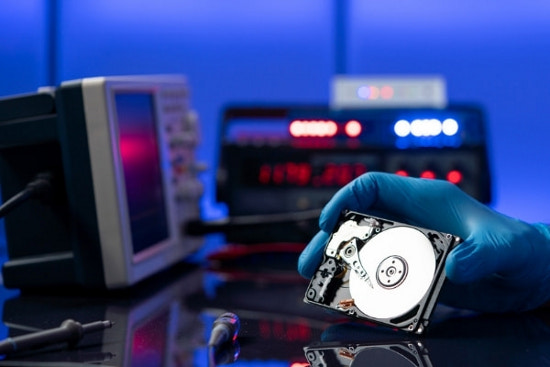Diving deep into the digital era, the need for securely handling data right from its creation to its destruction is critical. Effective management and data flow is essential in any industry may it be businesses, education, government, or health sectors. More the touchpoints associated with the destruction of data, more is the data subjected to the risk of being hacked, compromised, or stolen. Since such data is valuable, limiting its access from unauthorized sources through an effective data destruction system is essential.


Why do Organizations Need a Proper Data Destruction System?
Every day, we produce 2.5 quintillion bytes of data. Rationally, not all of this data may be useful after some time. Hence, securely destroying such data at the site itself is vital. In offices, using a paper shredder to destroy data stored on paper is ideally used. Data stored in hard drives can be destroyed using a degausser which uses powerful magnetic fields that sanitize the magnetic components of the drive.
The general norm in handling data destruction is to use third-party vendors for this type of work because they save time. But there are grave risks involved here. For instance, a man exchanged his hard drive with a new one from Cincinnati, Ohio, in 2005. He was assured that his old hard drive would be destroyed. But he received a call from a person who had supposedly purchased his old hard drive, with personal data still intact within the hard drive.
Even though this happened 18 years ago, who’s to say the same thing cannot happen today? Kroll Ontrack, a technology company, bought 64 hard drives on eBay. More than half of these hard drives still had confidential information intact. One of the hard drives was given to a third-party vendor for data destruction, but the vendor didn’t do their job properly.
When organizations choose third-party vendors to destroy or manage data, they are exposing themselves to a higher risk of data breach due to frequent cyber attacks on third-party vendors.
Importance of Data Destruction, In-House
Data destruction methods like formatting hard drives or using high capacity shredders should be a common practice in every organization. Using these methods, you need to make sure that every type of information and data is destroyed, including.
- Personally Identifiable Information (PII)
- Classified Information
- Controlled Unclassified Information (CUI)
- Sensitive but Unclassified Information (SBU)
- Information for Official Use Only (FOUO)
Here are a few reasons why in-house data destruction is recommended:
1. Prevents Data Theft: With companies sharing their hard drives and physical paperwork with third-party vendors, the risk of data theft is higher. There are several instances where data breach has occurred as a result of theft that directly impacts the accountability of a company.
2. Control Data Flow: Using proper data management channels ensures that your data flows in the right direction. This can be achieved by limiting the touchpoints to such sensitive and personal data by destroying it in-house.
3. Compliance with the Laws: At national and state levels, there are regulations instructing companies to ascertain proper data management and security. In case of destruction, it should be destroyed in a way that no part other than the authorized personnel get access to this data. It is up to an organization to protect and safeguard their client’s, customers, and employees’ data.
How to Assure In-house Data Destruction?
Create an action plan of how to destroy data within the company. Eliminating the risk associated with third-party vendors and destroying data promptly yet securely on-site. End-of-Life (EOL) data destruction has three components.
● Wiping: Data Wiping or Data Erasing is complete destruction of all electronic data from a hard drive with the help of a digital solution. It follows an irreversible process to overwrite the existing data on all hard drive sectors.
● Drilling and Crushing: As the name suggest, the hard drives are drilled and crushed with machines. However, there are better alternatives to this process as data destruction is not fully guaranteed.
● Shredding: Paper shredding with office and high-capacity shredders to eliminate all the identifiable information on paper.
Conclusion
With data gaining immense importance, we need to take care of its related aspects, including data destruction. The power that data holds today needs highly effective management consisting of data destruction and shredding.
For this purpose, a well-oiled data destruction plan is required in every organization dealing with customer, employee, and client data regularly. Investing in a data destruction device which is properly rated will go a long way in protecting a company’s confidential information from the risk of data breach along with being a cost-effective measure. The NSA maintains a list of evaluated and approved data destructions devices that guarantee data destruction to the point that it cannot be reconstructed.
















